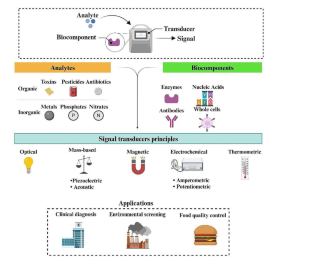Archives of Microbiology ( IF 2.8 ) Pub Date : 2024-04-05 , DOI: 10.1007/s00203-024-03933-5 Rittick Mondal , Shubhajit Shaw , Pankaj Mandal , Paulami Dam , Amit Kumar Mandal

|
Silkworms are an essential economic insect but are susceptible to diseases during rearing, leading to yearly losses in cocoon production. While chemical control is currently the primary method to reduce disease incidences, its frequent use can result in loss of susceptibility to pathogens and, ultimately, antibiotic resistance. To effectively prevent or control disease, growers must accurately, sensitively, and quickly detect causal pathogens to determine the best management strategies. Accurate recognition of diseased silkworms can prevent pathogen transmission and reduce cocoon loss. Different pathogen detection methods have been developed to achieve this objective, but they need more precision, specificity, consistency, and promptness and are generally unsuitable for in-situ analysis. Therefore, detecting silkworm diseases under rearing conditions is still an unsolved problem. As a consequence of this, there is an enormous interest in the development of biosensing systems for the early and precise identification of pathogens. There is also significant room for improvement in translating novel biosensor techniques to identify silkworm pathogens. This study explores the types of silkworm diseases, their symptoms, and their causal microorganisms. Moreover, we compare the traditional approaches used in silkworm disease diagnostics along with the latest sensing technologies, with a precise emphasis on lateral flow assay-based biosensors that can detect and manage silkworm pathogens.
中文翻译:

生物传感器应用在家蚕模型中恢复传染病管理的最新进展:对抗微生物病原体的新方法
蚕是重要的经济昆虫,但在饲养过程中容易感染疾病,导致蚕茧产量逐年下降。虽然化学防治是目前减少疾病发病率的主要方法,但其频繁使用可能会导致对病原体的敏感性丧失,并最终导致抗生素耐药性。为了有效预防或控制疾病,种植者必须准确、灵敏、快速地检测致病病原体,以确定最佳管理策略。准确识别病蚕可以防止病原传播,减少蚕茧损失。为了实现这一目标,已经开发了不同的病原体检测方法,但它们需要更高的精度、特异性、一致性和及时性,并且通常不适合原位分析。因此,饲养条件下蚕病的检测仍然是一个尚未解决的问题。因此,人们对开发用于早期和精确识别病原体的生物传感系统产生了巨大的兴趣。在转化新型生物传感器技术来识别蚕病原体方面也存在很大的改进空间。本研究探讨了蚕病的类型、症状及其致病微生物。此外,我们将家蚕疾病诊断中使用的传统方法与最新的传感技术进行比较,重点关注基于侧流分析的生物传感器,该传感器可以检测和管理家蚕病原体。



























 京公网安备 11010802027423号
京公网安备 11010802027423号